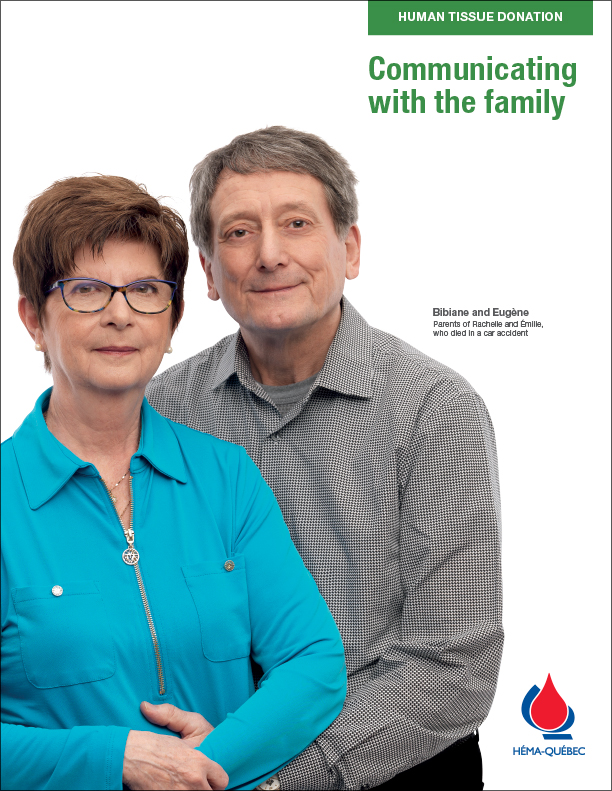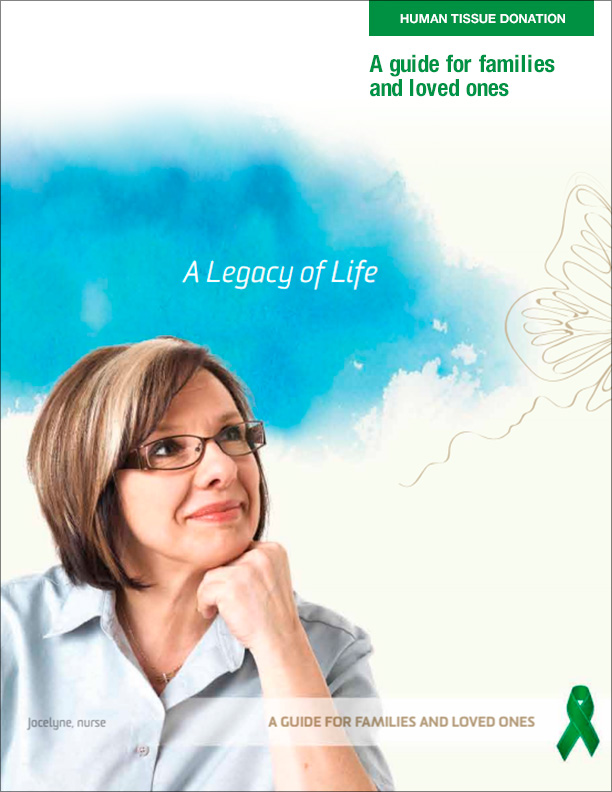Communicating with the family
| Download the document (PDF) | Download the document (PDF) |
Establishing contact with the potential donor’s family is a vital step in the donation process. Yours is the first role in the chain of life: you are the link between potential donors and eventual recipients.
Once you have recommended a potential donor to Héma-Québec, a coordinator will let you know whether or not there is consent in the registries of the Régie de l’assurance maladie du Québec (RAMQ) and the Chambre des notaires du Québec (CNQ).
PRESENCE of consent
Inform the family of the presence of consent in the registries or that the health insurance card is signed and that a Héma-Québec coordinator will contact them in the next few hours to answer their questions. Write down the name and telephone numbers of the family member to be contacted.
ABSENCE of consent
Meet with the grieving family to suggest the option of tissue donation and offer the support of a Héma-Québec coordinator who can answer their questions. Write down the name and telephone numbers of the family member to be contacted.
Approaching the family is important. Not offering the family the option of tissue donation is equivalent to making the decision for them. Family members who are dealing with emotional shock need a health professional to guide them through the process. You can make all the difference.
Nothing can make up for the loss of a loved one. Yet families frequently report that tissue donation gives meaning to the death of their loved one, creating a legacy of life!
OFFERING THE OPTION OF TISSUE DONATION – A successful approach
When approaching family members, ensure that they have received and understand all the information provided by the medical team regarding the death of their loved one.
1. The right time
The option of tissue donation should not be raised with the family at the same time as they are informed of the death. Give family members time to compose themselves, and only bring up the possibility of donating human tissue once the initial shock has passed.
2. The right person
Any member of the healthcare team can approach the family. It is important to identify beforehand the person who will meet with the family. The grieving family expects you to initiate this step at the right time. The trust that the family generally places in health professionals is a reassuring element.
3. The right way
- Show empathy and compassion while listening to the family’s needs.
- Use simple words and accessible language.
- Respect the family’s culture and beliefs.
- Bring up the option of tissue donation with one of the family members, for example:
- “As a health professional, I must bring up an important matter with you. Have you ever discussed organ and tissue donation with your loved one? Do you know his/her wishes? It would be possible, with your consent, to proceed with tissue retrieval. Tissue donation helps meet the needs of patients who are ill or victims of accidents who need a graft. Would you be willing to have a Héma-Québec coordinator get in touch with you in the next few hours to give you more information and to answer any questions you may have?”
If necessary, allow some time of reflection and give the family the “A Legacy of Life” guide for families and loved ones. Return later to ascertain whether or not the family consents to tissue donation, and respect their decision at all times.
If the family is open to tissue donation, confirm that a Héma-Québec coordinator will be in touch with them in the next few hours. You must also provide Héma-Québec the contact information (name and one or two phone numbers) of the family member to contact. The rest of the process will be managed by Héma-Québec, including recording of the family’s consent.
If the family refuses the donation, the process ends; you must enter the information in the deceased’s file.
Thank you for your commitment!
If you have any questions, contact a Héma-Québec coordinator at 1-888-366-7338, option 2 (24 hours a day, 7 days a week).


